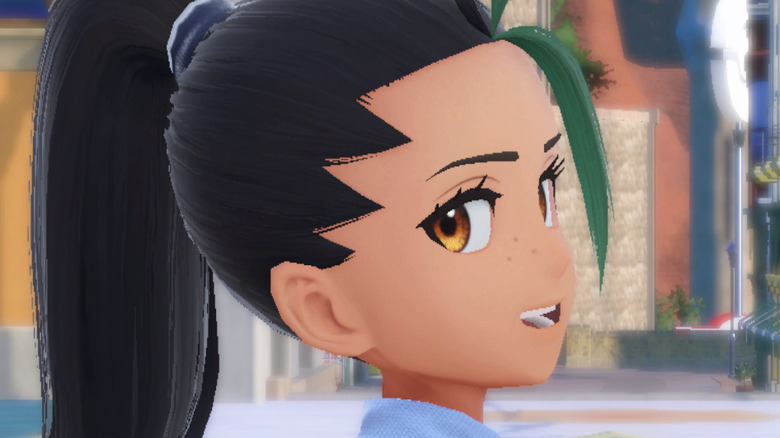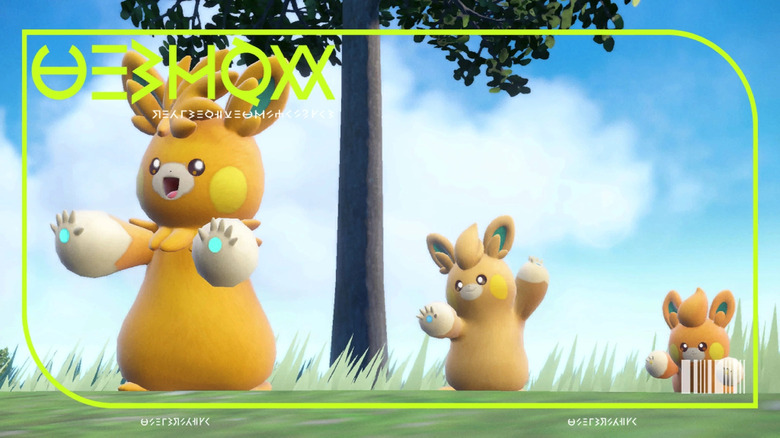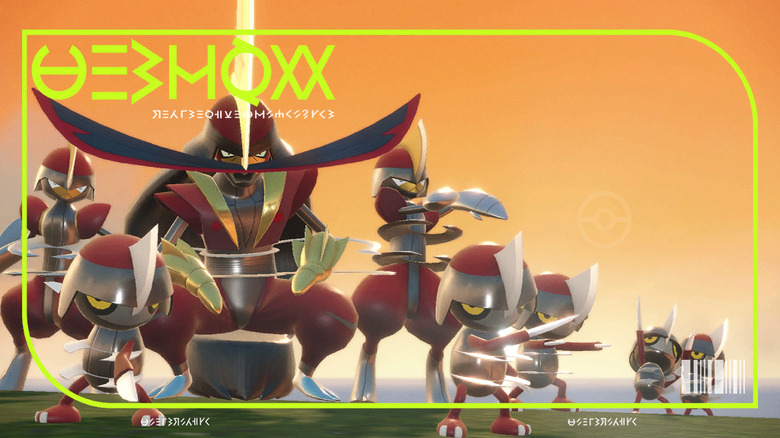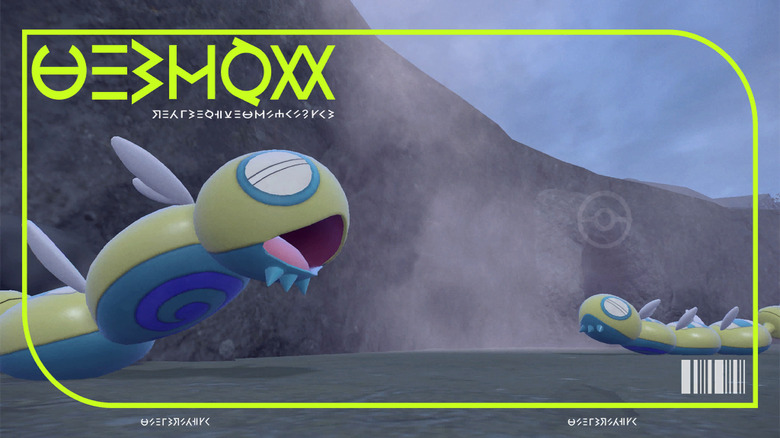Pokémon Scarlet And Violet: All The New Evolution Methods Explained
Among all the small, exciting details of the new game, an exciting part of being a Pokémon trainer is seeing one's teeny, superpowered critters evolve into more powerful beasts. Of course, "Pokémon Scarlet" and "Pokémon Violet" are no different, but there are some new evolution methods in this ninth generation of Pokémon that can require quite a bit of effort to see an evolution through.
To evolve Charcadet into Armarouge or Ceruledge, for example, requires players to run around and gather various materials before trading them for specific items. Of course, there are plenty of brand new Pokémon such as Fidough that evolve simply by reaching a certain level, or Tadbulb that evolves with the help of a Thunder Stone. However, "Pokémon Scarlet" and "Pokémon Violet" also have several evolution requirements that are not only unique to these games but that players will have to spend plenty of time on if they're seeking to fill out their Paldean Pokédex.
Three different Pokémon require 1000 steps
One of the new mechanics in "Pokémon Scarlet" and "Pokémon Violet" is the games' "Let's Go!" feature. Players can tap the ZR button on their Nintendo Switch while exploring the Paldea region to send out whatever Pokémon is in the first position of their party to run around and explore with them. It's a handy feature thanks to the fact that the scampering Pokémon will pick up any items they find, but there are three different Pokémon that can only evolve by allowing them to stretch their legs a bit.
Firstly, is the Fighting/Electric type Pawmo. Pawmo evolves from Pawmi at level 18, but can only turn into Pawmot once it has taken 1000 steps outside of its Poké Ball via "Let's Go!" mode. This shouldn't take players too long to accomplish, but it's worth noting that one's ambling Pokémon will be automatically returned to its ball if players get too far from them. Unfortunately, there's no way for players to precisely keep track of how many steps they've taken, but a good bit of meandering exploration should do the trick. Once Pawmo has taken those 1000 steps, it simply needs to level up once more, and trainers will have a Pawmot in their possession.
Pawmo isn't alone, however, as both the Grass/Ghost type Bramblin and Bug type Rellor turn into their stronger evolutions (Brambleghast and Rabsca respectively) by leveling up after taking 1000 steps. Leveling up three different Pokémon by walking 1000 steps each may sound like a lot, but, luckily, the open world of Paldea is a great place to get those steps in.
Three Pokémon that require incredibly specific steps for evolution
"Pokémon Scarlet" and "Pokémon Violet" place a large emphasis on multiplayer, so it's only natural that the Water type dolphin Pokémon Finizen evolves only when in another player's world. Once a Finizen hits level 38 while in a world with a different host player, it will evolve into Palafin. However, this transformation cannot take place if one is playing with others in their own world.
Finizen isn't too tricky then, but evolving the Dark/Steel type Bisharp into Kingambit will take some work. As gamers explore Paldea, they might notice that Pokémon can travel in small herds with their own species. At times, a group of Pawmi, for example, may be traveling together, and a single Pawmo or Pawmot can be seen with them. Players will have to find herds like this where a sole Bisharp can be seen among a group of Pawniards. Then, with their own Bisharp that they're hoping to evolve into Kingambit, players must defeat three different, herd-leading Bisharps. Leveling up their Bisharp once more after the three victories will create a Kingambit.
Hunting those specific herds of Pawniard can take a while, but not nearly as long as collecting Gimmighoul coins. The coin-loving Ghost-type Gimmighoul will only evolve into Gholdengo when players level up their Gimmighoul while having a whopping 999 Gimmighoul coins. Players can collect these spectral pieces of currency by interacting with Roaming Form Gimmighoul all over Paldea, or catching or battling any Chest Form Gimmighoul they happen to find as well. The latter method definitely gives the most coins, but every little bit helps when building toward that massive 999 requirement.
Maushold and Dudunsparce have alternate forms
While the enormous number of Gimmighoul coins are the last of the brand new evolutionary requirements within "Pokémon Scarlet" and "Pokémon Violet," the two Normal types Tandemaus and Dunsparce are worth mentioning not because of unique requirements for evolution, but because there is a random chance that their evolutions take one of two forms.
For Tandemaus, players simply need to have the Pokémon reach level 25. However, there's no evolution screen or animation that takes place when this happens. After reaching that level, players that didn't give this pair of mice a nickname will notice it's no longer called Tandemaus, but Maushold. Additionally, there will now be either a third smaller mouse-looking critter in front of the two original ones, or a third and a fourth. So, based on chance, players will now have a trio or quartet of micey companions.
Similarly, when Dunsparce turns into Dudunsparce, it has a chance to be a Dudunsparce with two body segments or three. Unlike Tandemaus, however, Dunsparce must first learn the move Hyper Drill before it can evolve. It learns this move at 32, but this doesn't mean that players must teach it to their Dunsparce right away. "Pokémon Scarlet" and "Pokémon Violet" allow players to reteach moves that were forgotten or passed on to their Pokémon at any time through their party options. Once a Dunsparce does know Hyper Drill, they'll have to level up, and players will have to cross their fingers to see if they receive a lengthy three-segment Dudunsparce.




